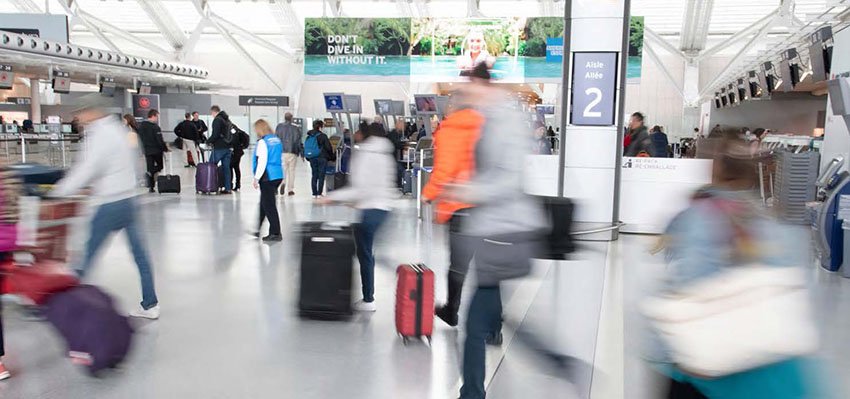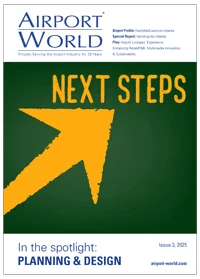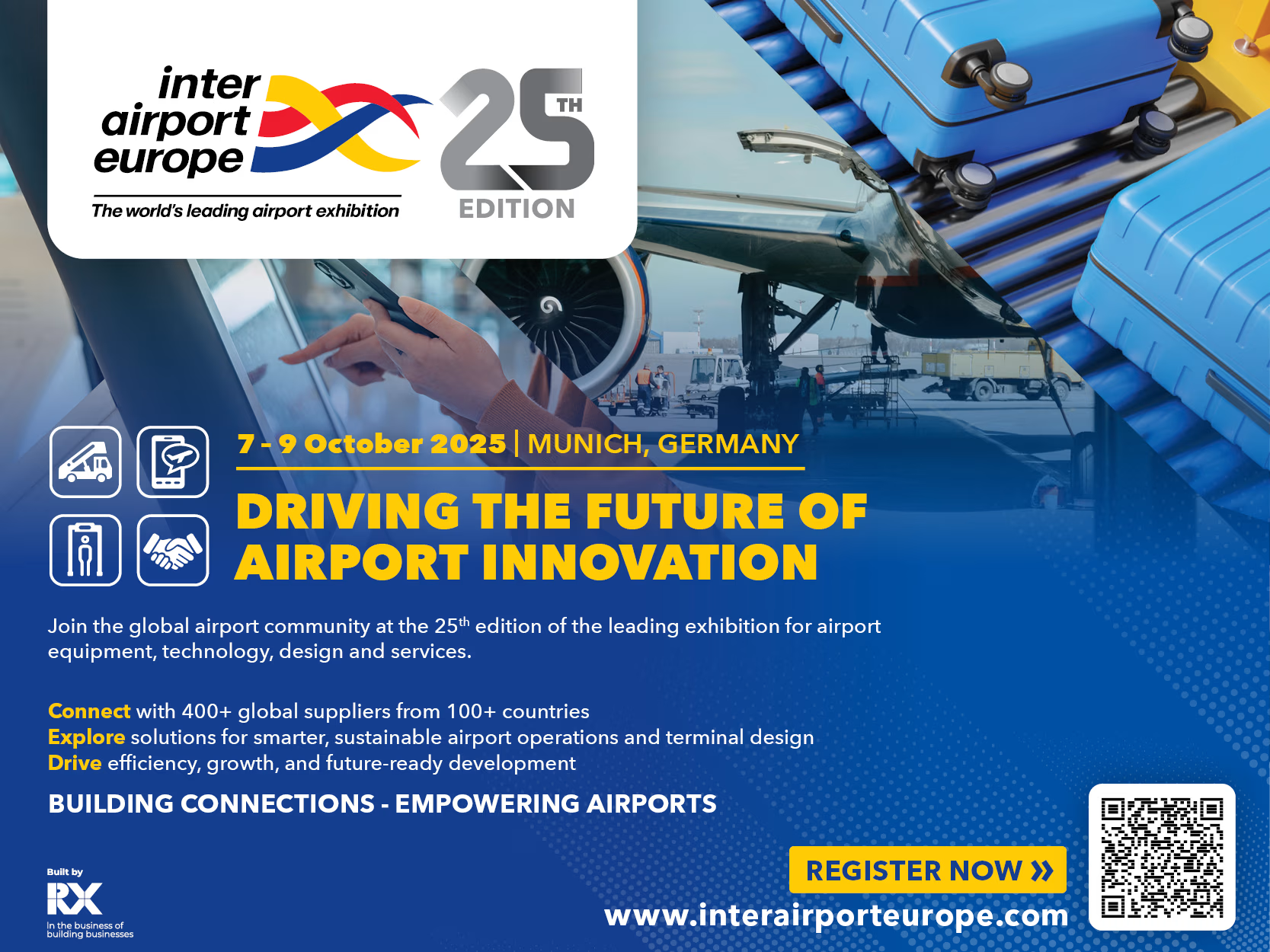Test beds for IT innovation
Share

SITA Europe president Sergio Colella explains why he believes smart airports embracing AI and connected data will be at the forefront of industry growth in the coming years.
Airports across the world are entering a new stage of extraordinary transformation. With demand for air travel surging, governments and operators are stepping up with major infrastructure projects.
In Asia, Singapore Changi and Incheon continue to expand with digitally driven terminals, while in the United States airports like Hartsfield-Jackson Atlanta and Dallas Fort Worth are embedding new technologies into large-scale modernisation plans.
In the UK, ministers have backed the expansion of Heathrow and Gatwick and fast-tracked a redesign of London’s airspace. Amsterdam’s Schiphol Airport has announced a €6 billion development programme stretching to 2029.
These efforts are crucial, but they won’t be enough on their own. Runways, terminals, and taxiways matter, but building our way out of congestion is no longer a sustainable strategy.
The real opportunity lies in pairing infrastructure investment with smarter, scalable technologies, with AI as a cornerstone. The stage is set for a more seamless, efficient passenger experience, if airports can harness the full potential of digital innovation.
MEETING COMPLEXITY WITH INTELLIGENCE
Airport operators are being asked to do more with less. Managing increased operational complexity without adding infrastructure or huge cost increases is no small feat.
AI offers a powerful way forward. Already, 45% of airports are integrating data and a further 13% are exploring ways to organise it to support AI initiatives.
Almost one in ten are actively training AI with collected data, though just 2% have gone as far as implementing Large Language Models (LLMs) within their systems.
Despite being at an early stage, AI is already delivering tangible results. In passenger-facing areas, it is being deployed in customer service (42% of airports) and passenger processing and flow management (40%). Over a third (36%) are now using AI for aircraft turnaround, driving faster gate assignments and improved on-time performance. Cybersecurity is another leading use case, with just over half of airports applying AI to detect and respond to evolving threats in real-time.
More advanced applications are beginning to take shape. Predictive baggage routing, dynamic resource allocation, and the use of AI in energy-efficient airside vehicle management are just a few of the innovations moving from concept to practice.
Together they show how airports can evolve from reactive hubs into intelligent ecosystems capable of anticipating needs and responding in real-time.
This shift is especially critical as travel patterns grow more unpredictable and pressure mounts to deliver seamless, personalised experiences at scale. New generations of travellers expect speed, convenience, and reliability as standard. To meet these expectations, airports need more than traditional tools.

THE NEXT FRONTIER OF AI
Looking ahead, airports are preparing to adopt a broader spectrum of AI. Generative AI will play a role in areas such as flight schedule optimisation, terminal design, and personalised communication to passengers.
Assistive AI will support operations centres, predictive maintenance, and multilingual assistance. Agentive AI will bring the next leap in automation, from improving autonomous baggage handling to reducing fuel consumption in self-driving vehicles.
Governments are also exploring agentive AI for enhanced security screening and more accurate threat detection.
It is telling that a third of airports surveyed say AI is a key IT resource focus for 2025, with one in six identifying it as their number one priority.
This level of commitment underlines the industry’s recognition that AI is not optional — it is becoming the foundation for how airports will operate.
Growth opportunities are significant. Autonomous AI optimisation will enable automated decisions and task allocation, alongside continuous simulation and prediction across the airport environment.
Autonomous common-use ground service equipment will improve utilisation of assets, boost return on investment, and accelerate the shift to autonomous operations across the wider airport ecosystem.
TURNING POTENTIAL INTO PERFORMANCE
To move from pilot projects to airport-wide transformation, a stronger foundation is needed. That starts with breaking down data silos and improving integration across the travel ecosystem, from airport systems to airline operations and border control.
When data flows securely across the ecosystem, AI shifts from a siloed tool to a real-time decision engine, unlocking new levels of efficiency and resilience.
Optimisation is the next frontier. As operations grow more complex, airports need a unified view of activity across landside, terminal, and airside domains.
When AI brings together passenger flow, baggage, aircraft turnaround, and resource allocation into a single operational picture, airports gain the insight to make smarter decisions, faster.
This level of visibility and co-ordination will be essential to keeping pace with demand.
Success also depends on people. AI needs to be woven into everyday processes, not layered on top. This requires not just new tools but also new ways of working.
Staff need the training and confidence to work alongside AI, and leaders need to embed these capabilities into strategy and culture.
The payoff isn’t just operational, it’s personal. Passengers benefit from shorter queues, more accurate information, and a smoother, more personalised experience.
LOOKING AHEAD
Airports everywhere face the same challenge: growth is accelerating faster than physical infrastructure can keep up.
Whether in Europe, Asia, the Middle East, or the Americas, the ability to absorb rising demand without compromising passenger experience or safety will ultimately hinge on how effectively airports embrace AI and connected data.
Tomorrow’s airports will be defined not by their size, but by their intelligence. That vision depends on systems, people, and partners working in concert.
The foundations are being laid today, and those who harness AI and data will shape the future of air travel.
Airports are more than gateways to cities; they are global test beds for innovation and collaboration. With the right investments in AI, data, and skills, we can create smarter, more sustainable airports that redefine what’s possible in air travel worldwide.
Europe, with its talent and infrastructure, has a chance to lead – but the opportunity is truly global, and the winners will be those that act fastest to embed intelligence into every part of the journey.













